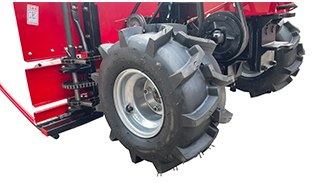Nov . 22, 2024 02:05 Back to list
changing brake drums
Changing Brake Drums A Comprehensive Guide
Braking systems are an essential component of any vehicle, ensuring safety and efficient operation. One crucial aspect of the braking system is the brake drum. Brake drums are steel or cast iron components that serve as part of the drum brake system, providing the necessary friction to slow down or stop the vehicle. Over time, brake drums can wear out or become damaged, necessitating their replacement. This article provides a comprehensive guide on how to change brake drums, ensuring a safe and effective vehicle maintenance procedure.
Signs It’s Time to Change Brake Drums
Before diving into the replacement process, it’s important to recognize the signs indicating that your brake drums may need attention. Common symptoms include
1. Unusual Sounds Squeaking, grinding, or tapping noises while braking can indicate worn brake shoes or damaged drums. 2. Vibrations If you feel vibrations in the brake pedal or steering wheel when braking, it may signal warped drums. 3. Reduced Performance Decreased braking efficiency or a longer stopping distance can also point to worn components. 4. Visual Inspection Inspecting the brake drums periodically for signs of scoring or cracks can help detect issues early.
If you notice any of these symptoms, it's crucial to address the problem promptly to maintain your vehicle's safety.
Tools and Materials Needed
Before undertaking the task of changing brake drums, gather the necessary tools and materials
- Jack and jack stands - Lug wrench - Brake drum puller (if necessary) - Basic socket set - Screwdrivers - New brake drums - Brake cleaner - Safety glasses and gloves
Step-by-Step Guide to Changing Brake Drums
changing brake drums

1. Prepare the Vehicle Begin by parking the vehicle on a flat surface and engaging the parking brake. Loosen the lug nuts on the rear tires slightly without removing them completely.
2. Lift the Vehicle Use a jack to lift the vehicle and securely place jack stands beneath the vehicle for safety. Once secure, remove the lug nuts and take off the rear wheels to access the brake drums.
3. Remove the Brake Drum Check if the drum is stuck. If it is, gently tap it with a hammer. If more force is required, you may need to use a brake drum puller to remove it. Once removed, inspect the condition of the brake shoes and other components.
4. Install New Brake Drums Before installing the new brake drums, clean the wheel hubs and the inside of the new drums with brake cleaner to remove any dust or oil. Place the new drum onto the hub and ensure it sits flush.
5. Reattach the Wheels Once the new drum is in place, carefully reattach the wheel. Hand-tighten the lug nuts and lower the vehicle slightly to ensure the wheel is touching the ground before fully tightening the lug nuts in a star pattern.
6. Repeat on the Other Side If you're replacing both brake drums, repeat the same process on the opposite side.
7. Final Checks Once both brake drums are installed and the wheels are securely attached, lower the vehicle completely. Start the car and pump the brake pedal a few times to ensure the brake shoes seat properly against the new drums.
8. Test Drive Finally, take the vehicle for a short test drive in a safe area to ensure the brakes are functioning correctly. Listen for any unusual noises and check for proper braking performance.
Conclusion
Changing brake drums is a crucial maintenance task for any vehicle owner, and it can significantly enhance the safety and performance of your braking system. By recognizing the signs of wear, gathering the right tools, and following a systematic approach, you can confidently undertake this project. Always prioritize safety and consider consulting a professional mechanic if you're uncertain about any aspect of the brake drum replacement process. Regular maintenance is key to ensuring a safe and smooth driving experience.
-
Premium Brake Drum Iveco – Durable Drum Brake Drum & Brake Shoe Solutions
NewsJul.08,2025
-
High-Performance Brake Drum Liza for Enhanced Safety Reliable Drum Brake Drum & Brake Shoe Solutions
NewsJul.08,2025
-
High-Quality Brake Drum MAZ – Durable Drum Brake Drum & Brake Drum and Brake Shoe for Optimal Performance
NewsJul.07,2025
-
High-Quality Brake Drum Kamaz for Reliable Performance Durable Drum Brake Drum & Brake Shoes
NewsJul.07,2025
-
High-Quality Brake Drum Kamaz for Reliable Performance Durable Drum Brake Drum & Brake Shoe Replacement
NewsJul.07,2025
-
Brake Drum Man - High-Quality Drum Brake Drum & Brake Drum and Brake Shoe Solutions
NewsJul.06,2025
